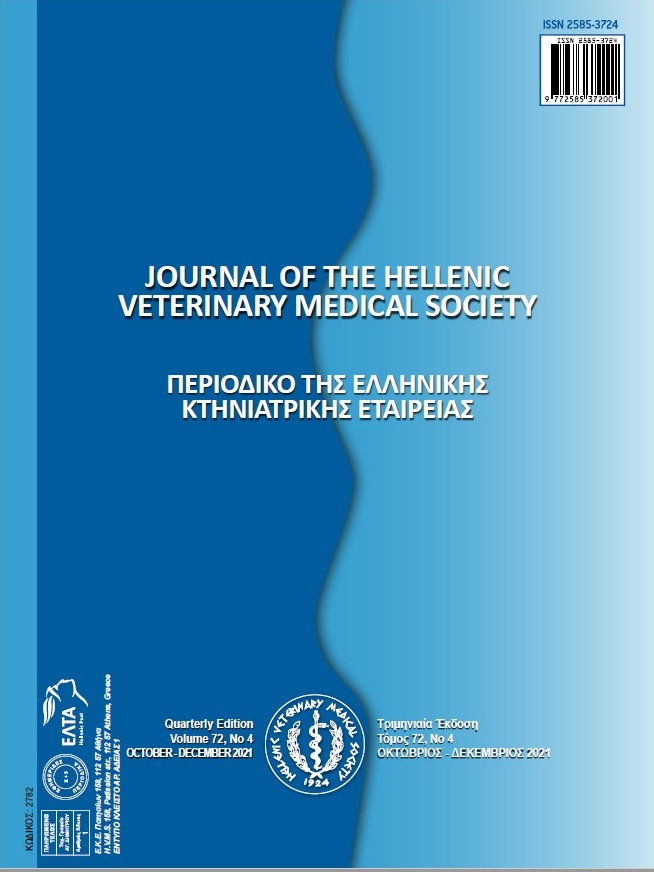Effects of Alchemilla vulgaris on haematology and antioxidant status of heatstressed quails during the late laying period

Abstract
The effects of Alchemilla vulgaris (AV) on haematology and serum, liver, and ovarian antioxidant status of heat-stressed quail in the late laying period were observed in this study. A 2×3 factorial design was used with 0, 1 and 3% AV fed in thermoneutral (TN) and heat stress (HS) conditions. A total of 150 quails were randomly assigned to six groups. The quails were located in temperature controlled rooms. The mean corpuscular volume (MCV), mean corpuscular hemoglobin (MCH), and platelet distribution width (PDW) obtained in quail fed 1% AV were higher than in 3% AV under both TN and HS conditions. Comparing 3% AV to 1% AV, the concentration of MCH obtained for 1% AV was higher in HS and lower in TN conditions. Besides, quails fed for 1% AV had a lower procalcitonin (PCT) value in HS than 3% AV but this PCT value was the same in TN. The serum malondialdehyde (MDA) was lower in 1% AV than 3% AV in both HS and TN. The ovarian MDA was lower in TN than HS. In both TN and HS conditions, the ovarian MDA value was determined higher for 1% AV than for 3% AV. The liver glutathione (GSH) value was higher in 1% AV than 3% AV in both TN and HS conditions. The Total Oxidant Capacity (TOS) value was found higher for 3% AV in TN and 1% AV in HS. The serum GSH, TOS, and oxidative stress index (OSI) values were lower for 3% AV compared to 1% AV for both TN and HS conditions, whereas for MDA value this was the opposite. The ovarium MDA and TOS values were lower for 3% AV than for 1% AV in both TN and HS. Also, the liver MDA, GSH, and Total Antioxidant Capacity (TAS) values were lower for 3% AV than for 1% AV in both TN and HS conditions. Finally, dietary AV has been shown to have a partial antioxidative effect on the defense system and also has effect on red blood cell profiles and platelet counts rather than white blood cell profiles.
Article Details
- How to Cite
-
KÖSEMAN, A., AKDEMIR, F., ÜREMIŞ, N., ŞEKER, I., & TÜRKÖZ, Y. (2022). Effects of Alchemilla vulgaris on haematology and antioxidant status of heatstressed quails during the late laying period. Journal of the Hellenic Veterinary Medical Society, 72(4), 3463–3472. https://doi.org/10.12681/jhvms.29396
- Issue
- Vol. 72 No. 4 (2021)
- Section
- Research Articles

This work is licensed under a Creative Commons Attribution-NonCommercial 4.0 International License.
Authors who publish with this journal agree to the following terms:
· Authors retain copyright and grant the journal right of first publication with the work simultaneously licensed under a Creative Commons Attribution Non-Commercial License that allows others to share the work with an acknowledgement of the work's authorship and initial publication in this journal.
· Authors are able to enter into separate, additional contractual arrangements for the non-exclusive distribution of the journal's published version of the work (e.g. post it to an institutional repository or publish it in a book), with an acknowledgement of its initial publication in this journal.
· Authors are permitted and encouraged to post their work online (preferably in institutional repositories or on their website) prior to and during the submission process, as it can lead to productive exchanges, as well as earlier and greater citation of published work.





